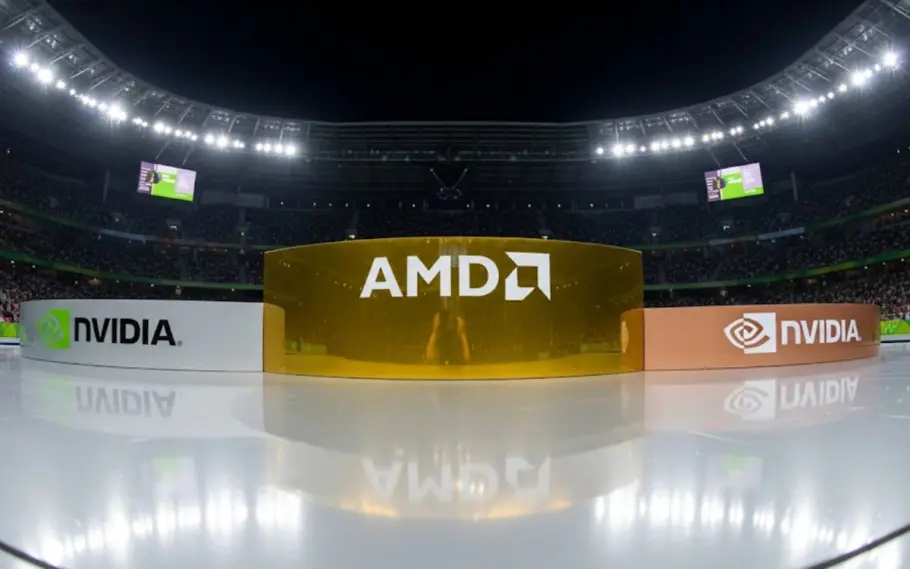
Hardware Unboxed has taken the Radeon RX 9070 XT back to its test bench to see how much its performance has improved with the latest drivers compared to launch day. The card launched on March 6th and AMD has been struggling to regain market share lost to NVIDIA .
Given the interdependence of hardware and software in graphics card analysis, it is increasingly important to revisit performance data. Graphics card drivers are constantly being updated, improving overall performance and expanding support for certain technologies to other games.
One example was the recent update that brought FSR 4 to GTA V and Monster Hunter Wilds . At launch,
there were over 30 titles supporting FidelityFX Super Resolution 4 , and AMD has been expanding the list with software updates.
And these updates can significantly impact performance in games, even in titles that haven’t received patches in a long time.
Hardware Unboxed testing was conducted using sixteen titles using the same system configuration and settings to ensure consistency. Completing the setup was a Ryzen 7 9800X3D and DDR5-6000 memory.
The tests also included the GeForce RTX 5070 Ti to help determine whether the performance gains are coming from AMD’s driver updates or general game patches. In some titles, both cards showed gains , suggesting that not all of the improvements were due to the Radeon drivers alone.
However, the channel noted significant performance increases on the 9070 XT in specific games. In other words, driver optimization played a substantial role in improving the card’s performance .
And of course the GeForce card also showed improvements , sometimes even surpassing the Radeon.
Finally, while the tests may suggest which gains come from the drives and which from the game updates, it cannot be ruled out that there is an overlap. In other words, in the future, the results may be different .
Preliminary Results
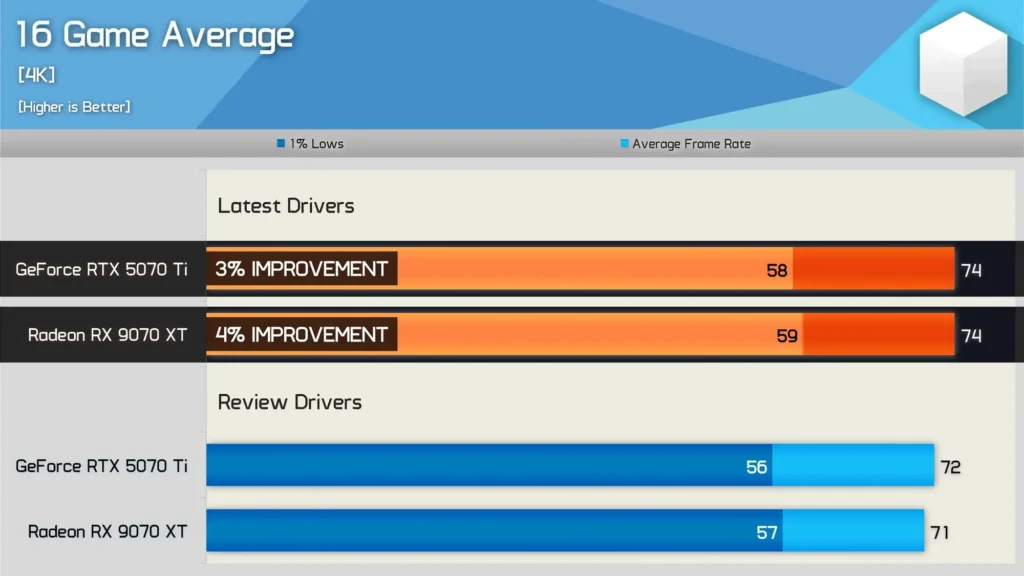
All 16 games were tested at 1440p resolution, and the 9070 XT saw an average performance increase of 9%, compared to just 2.5% for the 5070 Ti. As a result, the Radeon card went from a 2.5% disadvantage to a 3% advantage overall at 1440p.
In 4K tests, the gains were much less impressive, with both GPUs showing improvements in the single digits and delivering almost identical performance .
The most significant performance changes for the 9070 XT occurred at lower resolutions, where the initial RDNA4 drivers may have been less optimized.
Despite the performance gain, the real value depends a lot on the price.
At Kabum, RTX 5070 Ti cards range from R$6,499 ( Inno3D RTX 5070 Ti X3 16GB ) to R$8,888 ( Gigabyte RTX 5070 Ti WINDFORCE SFF 16G ). The 9070 XT cards range from R$5,999 ( XFX Swift WHITE TRIPLE FAN GAMING EDITION 16GB ) to R$6,999 ( XFX Mercury OC GAMING EDITION 16GB ).
In short, AMD’s most expensive card costs almost the same price as NVIDIA’s cheapest card. It should be noted that the prices shown do not take into account discounts, so gamers may find deals at more affordable prices.
In the US and Australia, the 9070 XT is significantly cheaper than the 5070 Ti, with the latter often costing 30% more . And that price difference makes the Radeon GPU a much more attractive option right now.
If this continues, it’s possible that AMD’s original strategy of aggressive pricing could reclaim some of the GPU market share for the red team.
Specific gains
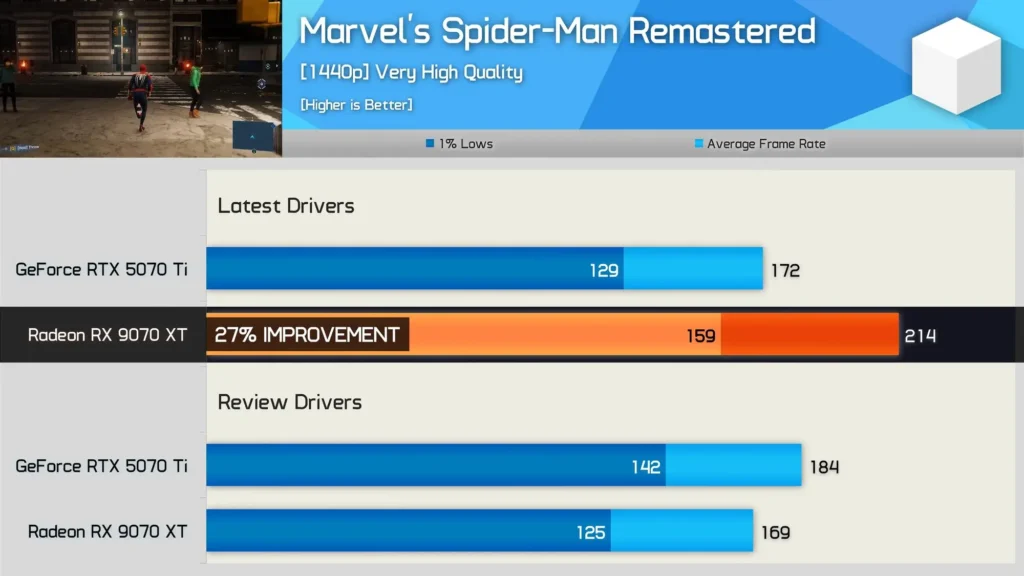
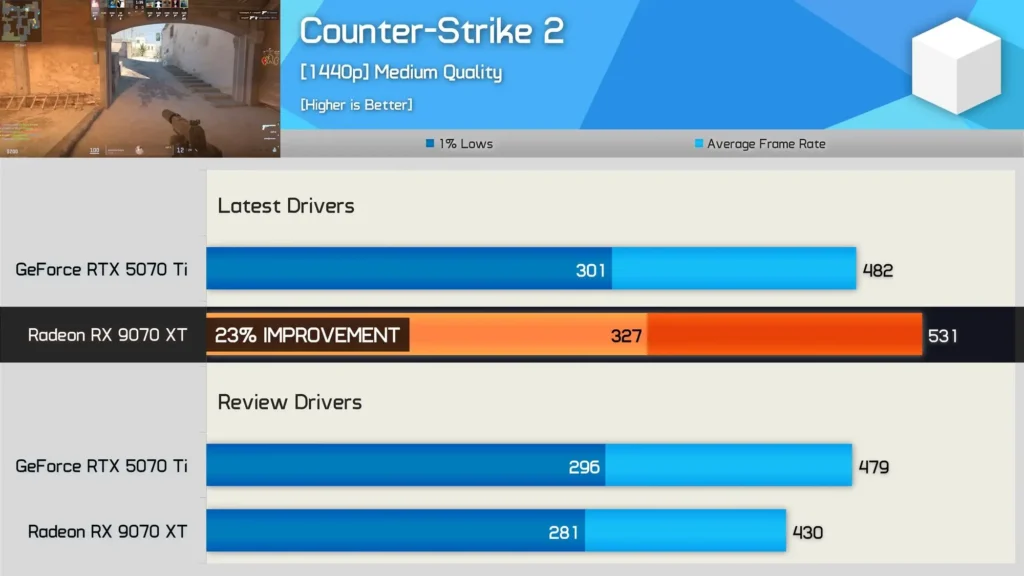
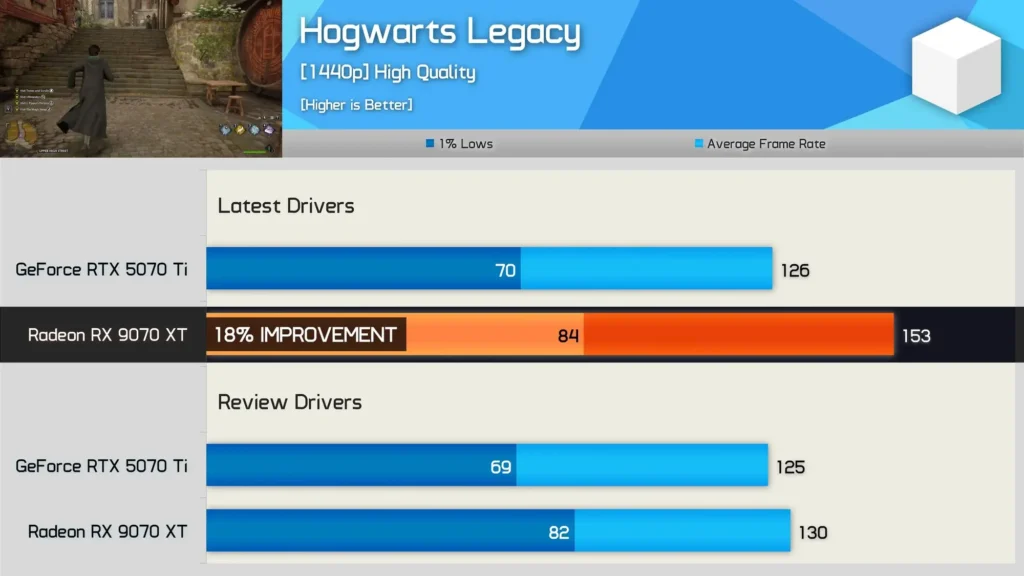
Several titles, such as Spider-Man Remastered , Hogwarts Legacy , and Counter-Strike 2, saw significant improvements for the 9070 XT, with gains of up to 27% in some cases. These increases often allowed the Radeon GPU to match or surpass the 5070 Ti, reversing the results seen in the original reviews.
The result wasn’t a massacre, with NVIDIA ‘s card showing minor regressions or marginal gains. In the case of Space Marine 2 , an earlier bug fix resulted in a massive 36% performance boost.
Yet in several other titles, such as Starfield and Dragon Age: The Valgard , neither GPU showed any significant changes.


